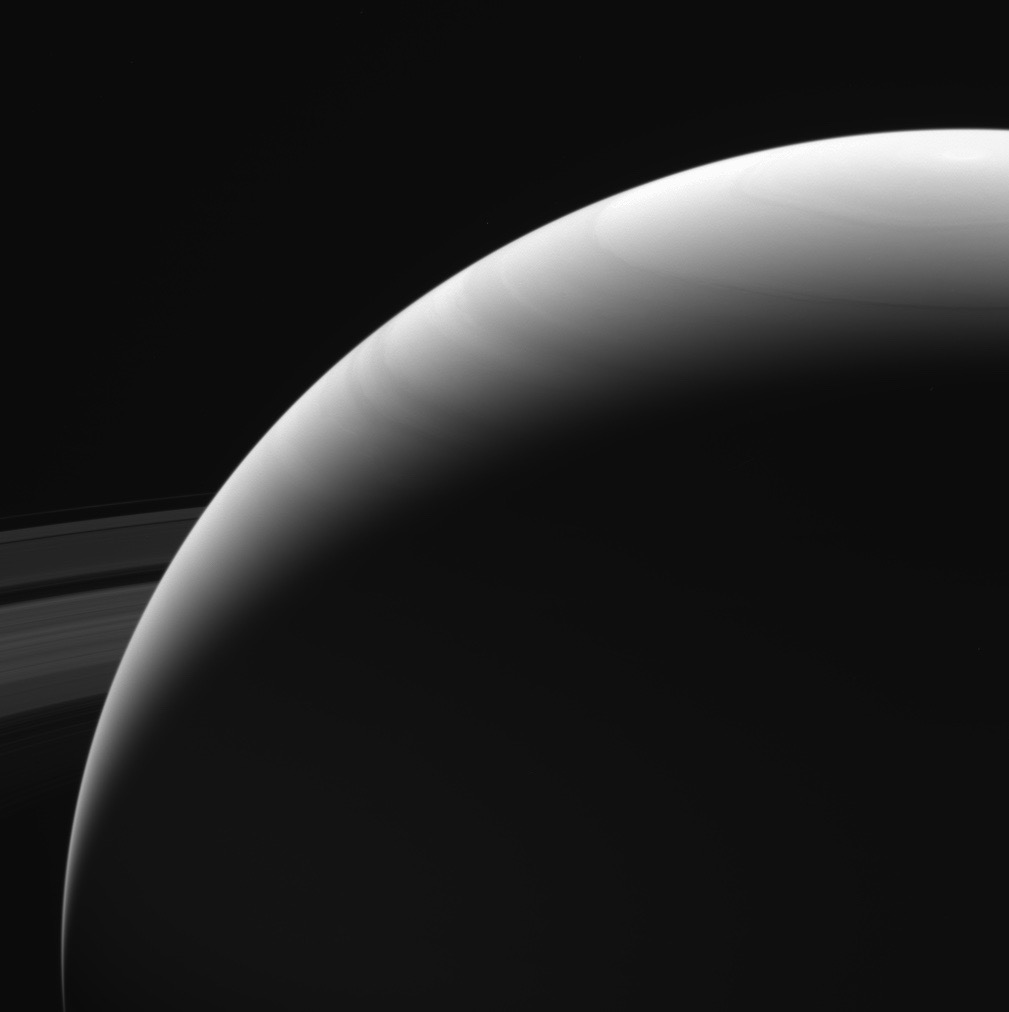'It Went Perfectly': Cassini Saturn Probe Was a Pro to the Very End

PASADENA, Calif. — NASA's Cassini spacecraft died the way it lived — as a well-oiled, data-gathering machine.
Cassini exceeded its handlers' expectations during its scripted death dive into Saturn's atmosphere Friday (Sept. 15), collecting high-quality data for 30 seconds longer than predicted, mission team members said.
"It went perfectly," Cassini spacecraft operations manager Julie Webster said here at NASA's Jet Propulsion Laboratory (JPL) during a news conference after the crash. [In Photos: Cassini's Last Views of Saturn at Mission's End]
The extended version
Cassini arrived in orbit around Saturn in 2004, then spent the next 13 years studying the ringed-planet system. This work was highly productive. For example, Cassini discovered that two Saturn moons — the huge Titan and the small, icy Enceladus — may be capable of supporting life.
But the probe was running out of fuel, so the mission had to come to an end. To ensure that Cassini never crashed into Titan or Enceladus (which would have risked contaminating one of these worlds with Earth microbes), mission planners steered the probe to a fiery demise in Saturn's atmosphere.
And today was the day. Hours before Cassini's plunge, the school-bus-sized probe lined itself up, turning its nose toward Saturn and its antenna toward Earth. That's an easy angle to hold in the vacuum of space, but once Cassini hit Saturn's atmosphere — at about 77,000 mph (123,000 km/h) — things got turbulent. Tiny thrusters had to fight to keep the spacecraft in line. Eventually, Cassini began to tumble, breaking its communication with Earth.
Initial models had suggested that Cassini's final signal would be received by JPL mission control at 5:08 a.m. PDT (8:08 a.m. EDT, 1208 GMT), Cassini program manager Earl Maize said. In Cassini's final days, that estimate was refined to 4:55:16 a.m. PDT (7:55:16 a.m. EDT, 1155:16 GMT). That figure would indicate about 1 minute's worth of data collection from within Saturn's atmosphere.
Get the Space.com Newsletter
Breaking space news, the latest updates on rocket launches, skywatching events and more!
"That's our story, and we're sticking to it," Maize, who, like Webster, is based at JPL, said during a news conference Wednesday (Sept. 13).
Because Earth and Saturn are separated by hundreds of millions of miles, it took 1 hour and 23 minutes for the spacecraft’s final communications to travel home to mission control. By the time the scientists and engineers received the signal this morning, the spacecraft had burned to ash long ago.
Cassini team members watched the monitors eagerly for the spacecraft's final pulse this morning. The projected deadline — 4:55:16 a.m. PDT — came and went, and Cassini data continued to stream in.
"We got almost 30 seconds longer than we predicted," Webster said during Friday's news conference.
Keeping its cool
Part of Webster’s responsibilities included taking Cassini's temperature, which was measured every 64 seconds. While exterior temperature variations during today's plunge weren't expected to cause any problems, Webster said the main part of the electronic bays needed to remain stable.
"That's been running room temperature from Venus to Saturn," she said, citing temperatures between 66 and 95 degrees Fahrenheit (19 to 35 degrees Celsius). (Cassini's seven-year journey to Saturn included two speed-boosting flybys of Venus.) "It was an incredibly well-designed mission to go to Saturn," Webster said.
Two days ago, Webster predicted to Space.com that temperatures would remain stable. "I don't think we'll see a high, because it will happen so fast," she said.
True to her forecast, Cassini’s internal structure didn't register a temperature spike.
"Right to the last end, the whole electronics assembly ran at room temperature," Webster said. "That's an amazing accomplishment, and that speaks to all the individual engineers that built the spacecraft to last."
And that spacecraft performed pretty much perfectly over the course of its long and storied mission, she added.
"The spacecraft did everything we asked it to do — everything — right to the very end," Webster said. "That's all you want for any human, let alone a robot."
Follow Nola Taylor Redd on Twitter @NolaTRedd or Google+. Follow us at @Spacedotcom, Facebook or Google+. Originally published on Space.com.
Join our Space Forums to keep talking space on the latest missions, night sky and more! And if you have a news tip, correction or comment, let us know at: community@space.com.

Nola Taylor Tillman is a contributing writer for Space.com. She loves all things space and astronomy-related, and enjoys the opportunity to learn more. She has a Bachelor’s degree in English and Astrophysics from Agnes Scott college and served as an intern at Sky & Telescope magazine. In her free time, she homeschools her four children. Follow her on Twitter at @NolaTRedd









